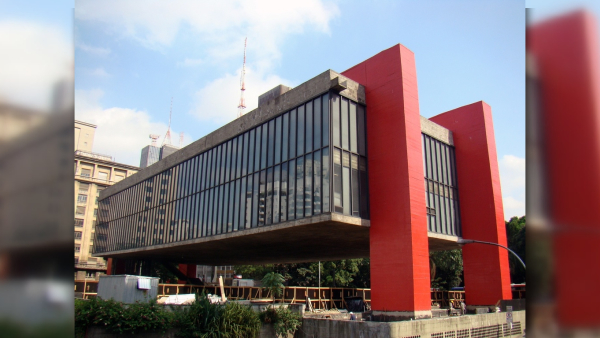Architecture is the art and technique of designing a building or building environment. It is the artistic and technical process that involves the elaboration of organized and creative spaces to house different types of human activities.
Architecture is the arrangement of parts or elements that make up buildings or urban spaces in general.
This art is composed of the set of principles, norms, techniques and materials used by the architect to create an architectural space. O architect is the professional legally qualified to practice architecture.
Etymologically, the word architecture originated from the Greek arkhitekton, joining the terms arkhe ("main is tekhton ("builder" or "construction"). However, before reaching the Portuguese language, the word was absorbed by Latin, architectus.
What does the architect do?
The architect is the professional responsible for plan, organize and coordinate the construction of buildings, combining aspects related to the comfort, functionality and aesthetics of the property.
It is the architect who builds the plan for a project, as well as choosing the materials and layout of the entire construction. For this, the professional needs to take into account the acoustics, maintenance, lighting, ventilation, environmental impact, among other factors that may influence the final quality of the construction.
Unlike the civil engineer, for example, the architect's work is directed towards the aesthetic and functional resolution of the work. On the other hand, engineering is responsible for solving structural and technical issues of the project, as well as the materials to be used.
Architecture course
To work as an architect, a person must have a degree in Architecture from an educational institution recognized by the Ministry of Education (MEC). In addition, the recent graduate must also be duly registered with the Council of Architecture and Urbanism (CAU).
Architecture courses (usually titled "Architecture and urbanism", in Brazil) have an average duration of 5 years. The focus of the training is on Arts and Humanities, but it is also important to develop knowledge in the areas of Exact Sciences, such as mathematics and physics, for example.
In the job market, the architect can work in several areas, such as interior architecture, industrial architecture, building restoration, urbanism (planning of urban spaces), etc.
Symbol of Architecture

The symbol is formed from the union of a square (sort of ruler used for drawings with precise straight lines) and a compass. The composition of the image creates a representation of Heaven and Earth.
The position of the compass refers to the celestial vault, while the square symbolizes the Earth and all things fixed on it.
architectural styles
Each civilization, at different times in history, built architectural projects based on its own elements. The inspiration for these particularities is in the culture, tradition and way of life of the respective societies.
Modern architecture

São Paulo Art Museum (MASP), Lina Bo Bardi (architect)
Modernism was a set of artistic-cultural movements that emerged at the beginning of the 20th century and that also influenced the architectural style of the time.
The buildings were inspired by the spirit of Industrial Revolution that reached its peak. Architects preferred the use of iron, glass and reinforced concrete as the main materials in their works.
The industrial character designs had simple, geometric shapes and, unlike classical architecture, with little (or no) ornamentation.
The priority was on the functionality of the buildings, that is, the way in which they could be integrated into urban life and people's daily lives.
It was also with the advances brought about during modern architecture that they were the first skyscrapers built in the world. This type of construction is, without a doubt, one of the greatest landmarks of this architectural style.
Oscar Niemeyer, Le Corbusier and Lina Bo Bardi can be considered some of the most important architects of modernism.
know more about modern architecture.
Contemporary architecture

Heydar Aliyev Center, Zaha Hadid (architect)
Many people confuse the modern architectural style with the contemporary, mainly because they think that the term "modern" is synonymous with contemporaneity. In reality, both are different and portray different periods.
The so-called contemporary architecture consists of a set of different style references. This is a reflection of one of the most prominent features of postmodernity: the pluralism.
Contemporary architects prioritize the use of natural light and, above all, the integration of construction with the environment, without causing negative impacts on the local biome.
The works usually have an irregular shape, with large windows (a means of obtaining more natural light), and the use of recyclable materials.
This style also tends to incorporate new technologies, such as the Internet of Things, creating a direct communication relationship between people and the building.
roman architecture

Rome Coliseum (Flavian Amphitheater)
Influenced by Greek and Etruscan architecture, Roman is part of the classical phase of architectural styles.
Roman architects saw the need to express through their works an idealization of beauty, but also to represent the reality experienced by citizens.
Unlike Greek architecture, this one kept its buildings predominantly in urban areas. The planning of temples, spas, aqueducts and amphitheaters was common.
Aesthetically, what characterizes Roman architecture is the valorization of arches, a heritage of the Etruscans. In addition, buildings used to have large vaults and column-free interior spaces.
greek architecture

Acropolis
Greek architecture, famous for its great works, reached its peak under Pericles' government, especially in Athens.
The great names in Greek architecture were Ictínio and Callícrates, responsible for the construction of several monuments. The temples were the main works, built in carved stone, so adjusted that they did not need mortar.
One of the main features of this style is the use of columns. These were divided into three distinct architectural models, either by shape and shape:
- the Doric, featuring columns of rigid lines and smooth capital, the most famous of which is the Parthenon, in Athens;
- the Ionic, characterized by the lightness and elegance of the columns, visible in the temple of the goddess Niké, also in Athens;
- the corinth, with the top (capitel) ornate in the form of leaves, found in the Temple of Apollo at Corinth, in present-day Turkey.
Gothic architecture

Milan Duomo (Cathedral of Milan)
The height of Gothic architecture was between the 12th and 13th centuries. However, this architectural style was only known as "Gothic" from the 15th century onwards, by the Renaissance.
Gothic architecture flourished in the midst of the renaissance of commerce (low Middle Ages), when cities began to grow.
The main buildings at the time were the churches, which brought together some of the strongest features of the Gothic period:
- pointed arches;
- vaults formed by a set of pointed arches;
- facades with three arches;
- flying buttress.
These structural innovations allowed, for the first time, buildings could have a greater verticality. For this reason, Gothic cathedrals are known for their imposing vertical elevation.
In addition, Gothic architecture also placed a high value on decorative facades. It was common to use expressive sculptures, lacework, balustrades rich in details and stained glass/rose windows.
Renaissance architecture

St. Peter's Basilica
It had greater representation between the 15th and 16th centuries, a period in which European society underwent intense ideological transformations.
Renaissance architecture was opposed to the Gothic style (it considered it very ugly). On the other hand, he valued aspects that referred to the concepts of anthropocentrism, symmetrical perfection with rigorous proportions and the "Reason Man".
Among some of the main aesthetic features of Renaissance architecture, the following stand out:
- Symmetry enhancement;
- Horizontality in form;
- Columns supported by corbels;
- Alternation of pediments;
- semicircular arches;
- Appreciation of delicate and articulated traits.
Sustainable architecture
Considered a strong trend within contemporary architecture, the sustainable architectural style began to become popular between the 1980s and 1990s.
As the name suggests, architects seek ensure the sustainability of the environment, ensuring that constructions do not cause negative impacts on nature.
For this, there are some principles that characterize sustainable architecture, such as:
- Planning the work based on all the natural surroundings (ecosystems, hydrography, geology, etc.), as well as the local climatic conditions;
- Reduce as much as possible the consumption of energy spent on the work, prioritizing the use of clean/renewable energy sources;
- Use of ecological, recycled and regional materials (avoids the environmental wear and tear that the transport of materials could cause);
- Ensure that the final work is integrated with the environment;
- Ensure water savings during the construction of the building, as well as provide adequate infrastructure for that the building is able to save water (install timers / sensors on taps and showers, for example);
- Ensure that the building produces energy in a sustainable way (installation of solar panels, for example).
Learn more about Sustainability.
